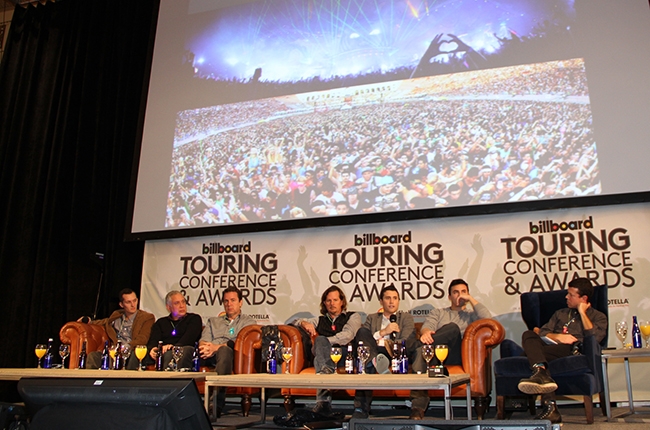There was a lot of industry news this past week you may have missed. Here are some headlines that caught our eyes.
Ashley Capps, Charlie Jones and More Get Rained On, Pay $10 for Beer, Take Shots and Name ‘Douchiest Agents’ at Touring Panel
–Billboard
From mainstay festivals like Coachella and Bonnaroo to brand new niche festivals like the Mountain Oasis Electronic Music Summit, music fans have come to embrace festival experiences. Amid the increasing competition and with the same pool of artists to choose from, how do promoters continue to keep their festivals fresh? That was one of the biggest questions Ticketfly Founder & CEO Andrew Dreskin had for the panel of festival game-changers at the 10th annual Billboard Touring Conference.
Live Nation’s Earnings Reveal Concert Boom; Can It Continue?
–Forbes
According to Mogil, Live Nation and its subsidiaries drew 2.5 million concert-goers for EDM performances alone, thanks in part to 18 electronic festivals, nearly double last year’s total. Across all genres, the company launched 16 new festivals, bringing its total to 69 over the past year.
Which is More Important When Choosing a Facility: Price or Airport Proximity?
–MeetingsNet
Ten to 15 years from now, the majority of meeting decision-makers will be Gen X (age 33-46) and Gen Y (age 18-32). So conference centers and hotels need to learn more about what matters to this group—and fast. That was the thinking behind the International Association of Conference Centers study, “The Intergenerational Preferences of Meeting Planners,” which was presented at IACC’s annual meeting in March and will be expanded for 2014.
How The Most Brain Friendly Conference Makes Attendee Networking A Priority
–Midcourse Corrections
According to studies by ASAE, MPI and PCMA, people attend conferences for networking and learning (education.) If those are the top two products that our conferences are selling, doesn’t it make sense that we should focus on improving those two products?
The Reality of Google Glass
–The Meeting Professional
Early Glass adopters (Google calls them “Explorers”) find they have paid $1,500 for the privilege of explaining all of the things Glass doesn’t do. It’s not constantly recording video (it has a 10-second limit on videos). It’s not always on. It doesn’t do facial recognition (officially, at least). There’s no virtual reality overlay on the world. It is, as wearable-tech guru Amber Case calls it, “calm technology.”
(Image via A Turner Archives)

